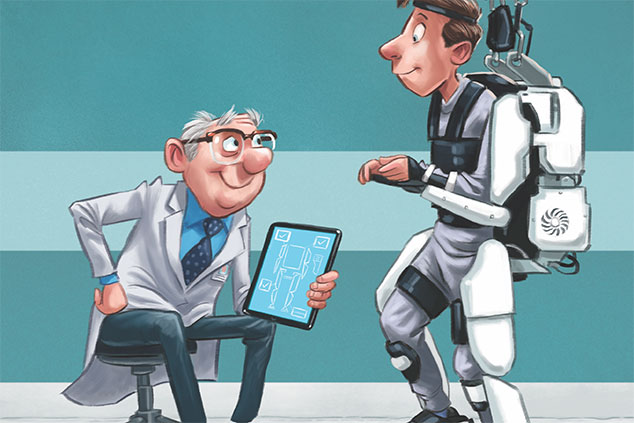
Intelligent artificial limbs, medical exoskeletons and devices that link artificial limbs directly with the brain may sound like science fiction, but they are getting closer. Which stocks will profit? Matthew Partridge reports.
When we think of medical technology, miracle drugs and biotechnology tend to spring to mind. However, medical devices, long considered the poor cousin of the healthcare industry, have been undergoing a quiet revolution. Intelligent limbs, which mimic the action of the original body part, and exoskeletons – robotic suits designed to aid movement – are starting to be go mainstream. Even medical devices that can communicate directly with the human brain may not be as far off as you think. What’s more, with medical and social-care systems struggling with age-related problems, the long-term demand for such devices will be immense.
Artificial limbs are getting more sophisticated
Artificial limbs have existed for thousands of years. But in the 1990s new types of “intelligent” prostheses emerged. Instead of being passive lumps of metal, plastic or wood, these came with electronics and hydraulics that allowed them to function in a way that anticipated and supported users’ movements rather than just remaining rigid. Unfortunately, despite their benefits to patients who had lost limbs, they tended to be expensive, bulky and required recharging after only a short time, which limited their appeal.
Fortunately, this is beginning to change. There has been a “huge amount of progress over the past five to ten years in the quality of the most advanced prosthetics”, says Dr. David Moser, head of research at Chas A. Blatchford and Sons. For example, developments in microprocessor technology mean that the limbs are much better at tracking and predicting the motion of the user. Not only do they capture a much larger amount of data, but they also spot behavioural patterns. The microprocessor collects the pattern data and uses it to send instructions to the mechanical elements that then move the limbs.
Advances in limb technology are also allowing much more complex devices to be created. While the first generation of intelligent limbs focused on one joint, such as the foot, some of the most sophisticated of the current generation of artificial limbs “are now able to control multiple joints together”, says Moser. For example, Blatchford’s Lynx system “enables integrated control of knee and foot by an internal computer”. This allows those who have had their limbs amputated above the knee to walk, something that would have been impossible with the previous generation of intelligent prosthetics.
Controlling prostheses by smartphone
In addition to improvements in quality and complexity, the weight and bulk of the limbs is also starting to decrease. Smaller microprocessors and better materials mean that they are lighter and consume less power, so they are more comfortable and need not be recharged so frequently. Some of the devices can even be controlled from the user’s smartphone. Finally, and perhaps most importantly from the perspective of a cash-strapped healthcare system, they are becoming cheaper, making them a realistic option for a far wider range of patients. Overall, today’s artificial limbs “are much more stable and smoother than they were a few years ago, providing a greater quality of life for the patient”, says Moser. Not only are patients using them able to perform tasks that were previously impossible, such as walking and even playing sports, but there are also less obvious benefits. In addition to improved mental health from the increased independence, using an intelligent artificial limb instead of a conventional prosthesis can reduce the mental effort (what Moser calls the “cognitive burden”) involved in everyday movement. It can also reduce the long-term skeletal problems that occur when users adjust their posture to compensate for the prosthesis.
Subscribers can read it in the digital edition or app